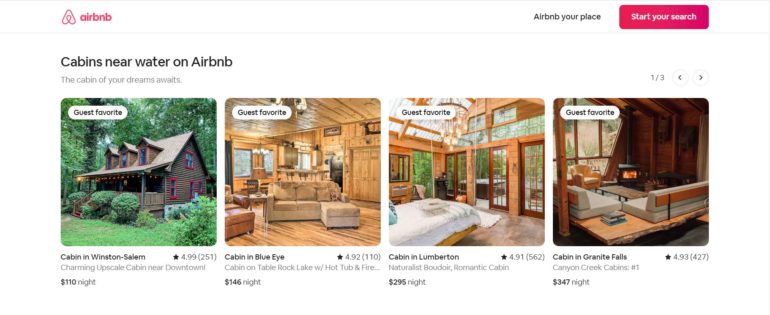Let’s say you run an online shop. Let’s call you customer Sarah. She looks through your books and puts a few in her cart, but she doesn’t buy anything. Now, this kind of thing happens all the time. Here, retargeting and remarketing strategies become essential tools to reconnect with Sarah and similar customers, guiding them back to complete their purchase. As we’ve mentioned before these are one of the best digital marketing strategies for business growth. Today, our main goal is to speak about these strategies to convert abandoned users.
What is Retargeting and How Can it Increase Conversions?
Retargeting is a way to reconnect with anyone who’s had any kind of interaction with your business before. Maybe they visited your website, liked a post on your social media, or even signed up for your newsletter – retargeting is your chance to tap them on the shoulder and say, “Hey, remember us?”
Now, a classic move in retargeting, especially in the e-commerce world, is focusing on abandoned carts. That’s like seeing someone eyeing a cool pair of shoes in your store, but walking out without buying them. With retargeting, you get to show up later – maybe in their social media feed or websites they visit – with those same shoes, reminding them how awesome they are.
Let’s go back to our example. Let’s say Sarah left the website and now is scrolling through her social media ads to see some updates. You can show ads to her about the books she was interested in and remind her that she didn’t make any purchases. This way, she may remember that she added the book to her cart but didn’t do anything and come back to your website to complete her purchase.
The Difference Between Remarketing and Retargeting
Remarketing usually means re-engaging customers through methods like email. After Sarah abandons her cart, you send her an email reminding her of the books waiting for her. Retargeting, conversely, uses ads to target past visitors based on their online behavior. So, we can say that retargeting is part of a remarketing strategy.
The Best Remarketing Techniques
Let’s check the best practices for email remarketing techniques:
1. Personalized Email Campaigns
In remarketing, personalized email strategies are very important. These campaigns help you send people emails considering their preferences and behavior in the past. You need to show your customers that they matter to you and are not just a number on the list.
Let’s take Amazon as an example. If you look at a bunch of books in a certain genre but don’t buy any, Amazon will often send you an email with a list of books from that genre, including the ones you looked at. Customers will feel like Amazon really knows what they like with this personalized method, which makes them more likely to make a purchase. This is a smart way to convert abandoned users. What makes this approach stand out is how you feel. It’s not just about Amazon trying to make a sale, they’re understanding your specific interests.
Digi-Tip: For personalization, you should use first names when sending email to make it more friendly 👇🏼

2. Timely Follow-Ups
Timing is everything in remarketing. If you send a follow-up email too soon, it may seem a little pushy, while sending too late may be the reason why your customers go to your competitors, since they may lose their interest. Then which is the best time? Two to three days are the rule of thumb, preferably at 10 AM or 11 AM.
For example, Booking.com has mastered the art of timing. If you search for hotels in Paris but don’t book immediately, they might send you a reminder email within two days, often including a gentle nudge like “Rooms are filling up fast!” This creates a sense of urgency and makes customers act quickly not to miss the chance.
3. Offering Incentives
Try to offer incentives as well, including discounts, exclusive offers, or free shipping to convert a lead into a customer. Let’s talk about ASOS, the fashion hotspot. Picture this: you’re browsing their site, and maybe you find a trendy jacket and add it to your cart. But, then you forget to check out. A day or two later, ASOS sends you an email offering 10% off on your next purchase. It’s like saying ‘How about 10% off on that jacket you liked?’ Pretty smart move by ASOS, right? This abandoned cart recovery is a small and smart move that pushes the customer to complete a purchase.
4. Segmentation of Audience
What’s audience segmentation? It’s like putting your audience into different groups so you can chat with them more effectively. Think of it as organizing your friends based on what they like – some are into sports, some love books, and others are movie buffs.
Let’s take the case of Netflix. Ever started watching a thriller on Netflix but didn’t get to finish it? Netflix catches onto that. They might drop you an email saying, “Hey, noticed you’re into thrillers. Check out these other heart-racing shows.” It’s their way of keeping the conversation going, tailored just for your tastes.
Retargeting Campaign: Best Practices
Now, it’s time to check the best practices for retargeting ads:
1. Retargeting Across Multiple Channels
Multi-channel retargeting means reaching out to potential customers through various platforms – social media, search engines, etc. Social media retargeting is a part of this, where you use social media platforms to push your leads to take action.
Let’s check the example of Nike. Let’s say you’re browsing the website of Nike to buy some cool sneakers but end up without purchasing anything. Again, they need to use a retargeting ad strategy for abandoned cart recovery. For that, they use multi-channel retargeting. This is when you see those same cool sneakers popping up in ads on your Facebook feed, Instagram stories, and even on some other websites you visit. Nike is making a smart move here, they keep reminding you of the sneakers to make you return to their site and make a purchase.

This may make you feel concerned about your privacy or data collection. However, popular brands adapt retargeting strategies to be more transparent and privacy-focused, ensuring trust and compliance.
2. Personalized Retargeting
This strategy is about creating ads that feel personal and relevant to the individual user, based on their browsing and purchase history. As we brought a lot of examples above, you can see that all popular and successful brands use personalized retargeting since they show ads or send emails with content that has already been admired by the customer before.
3. Cross-device Retargeting
The name itself hints to us that this type of retargeting is about making sure that your ads show up across different devices, including mobile phones and laptops. Spotify uses this method effectively. If you explore music on your phone but don’t subscribe, Spotify retargets you with ads on your laptop or tablet, reminding you of the premium features you’re missing out on, thus encouraging a subscription.

4. Segmented Retargeting
As we’ve discussed in the remarketing section, segment retargeting helps you divide your customers into different groups based on their tastes and preferences. For example, Adidas does this by segmenting its audience based on interests. If you looked at running shoes but didn’t buy them, Adidas will retarget you with ads specifically for their latest running gear, rather than general sports apparel.
5. Behavioral Retargeting
This strategy uses the user’s online behavior to create targeted ads. Facebook is a master at this. If this social media platform finds out that you’re more interested in fitness based on your online behavior, it may start showing you ads for health supplements or workout gear. Using this approach is the best way to retarget your customers.
6. Landing Page Optimization for Retargeting
Besides using the right retargeting ad strategies, you must know where you want to take your customers when they click on your ad. You can create landing pages for example. It’s all about making sure the page your customers land on after clicking an ad really matches what the ad is talking about. The idea is to make everything flow smoothly so that they’re more likely to do what the ad wants, like buying something or signing up.
For example, Airbnb does this effectively. Say you’re browsing and an Airbnb ad catches your eye, maybe for a cozy cabin in the mountains. You click on it and bam – you land on a page full of tempting cabin listings in that mountain area. It’s like they read your mind and laid out all the options, making it super easy for you to go, “Yep, I’m booking this.”

7. Measuring Retargeting Success
It’s crucial to measure the success of your retargeting campaigns to understand their effectiveness and ROI. Google provides tools like Google Analytics, which many companies use to track the success of their retargeting campaigns, assessing metrics like click-through rates and conversion rates, to continuously refine their strategies.
Remarketing and retargeting, when done right, can be powerful tools to re-engage potential customers and drive conversions. By learning from successful brands like Amazon, Booking.com, ASOS, Netflix, etc. businesses can create more effective and personalized remarketing and retargeting campaigns. Remember, the key lies in understanding and respecting your customer’s preferences and privacy.
FAQs
What is a strategy to target users who visited the website and did not convert?
- Use retargeting and remarketing strategies to show personalized content to users who visited your site but didn’t make a purchase.
What is retargeting and how can it be used to increase conversions?
- Retargeting is a marketing strategy where you display ads to people who have previously interacted with your website or app. It increases conversions by reminding these potential customers of their interest in your products, encouraging them to complete a purchase.
What is the difference between remarketing and retargeting?
- Remarketing is a broader strategy encompassing various methods to re-engage past visitors or customers, including emails, calls, or physical mail. Retargeting specifically refers to using online ads to target users who have previously interacted with your digital platforms.
What are best practices of a remarketing strategy?
- Best practices include segmenting your audience for personalized communication, timely follow-ups, offering incentives, respecting user privacy, and segmenting audience.




